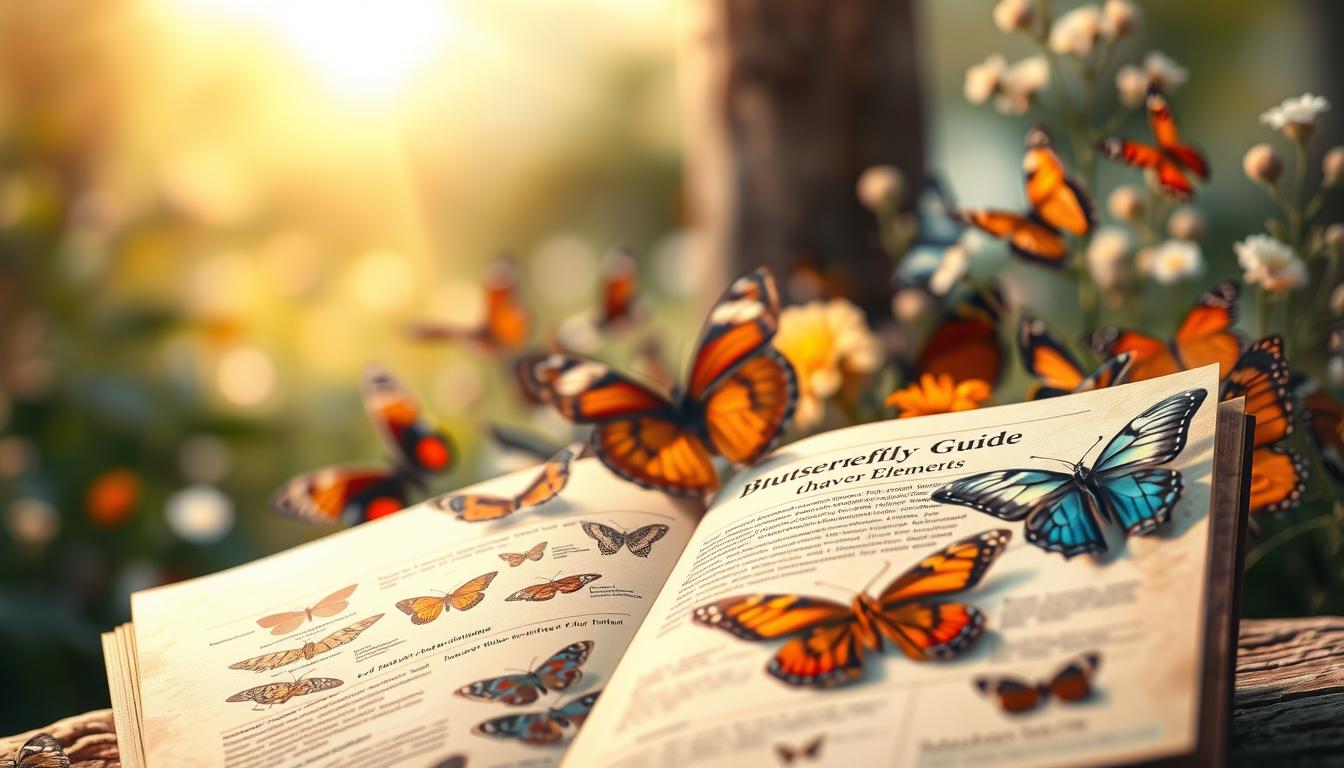How to Take Care of Butterflies
Dive into the enchanting realm of butterfly conservation. Learn to nurture these delicate creatures from caterpillar to adult. This magical journey offers families and nature lovers a chance to witness nature’s beauty up close1.
The butterfly’s life cycle is truly remarkable. It starts as a tiny caterpillar and transforms into a stunning winged insect. Caterpillars typically live for 7-10 days before entering their chrysalis stage21.
Butterfly conservation requires careful attention and knowledge. With a 99% success rate, raising butterflies can be incredibly rewarding1. Painted lady butterflies live about two weeks, eating and laying eggs during this time2.
Different butterfly species have unique needs. Monarch caterpillars only eat milkweed plants. Black swallowtail caterpillars prefer herbs like dill and parsley1.
Understanding these specific requirements is crucial for successful butterfly care. Proper habitat and nutrition are essential for their survival.
Key Takeaways
- Butterfly conservation is an engaging and educational activity
- Caterpillars require specific care during their transformation
- Different butterfly species have unique host plant requirements
- Proper habitat and nutrition are critical for butterfly survival
- Observing the butterfly life cycle provides valuable insights into nature
Essential Supplies and Habitat Setup for Butterflies
Creating a perfect butterfly habitat needs careful planning. Butterfly gardening mixes science and passion. It helps these delicate creatures thrive in controlled spaces3.
Successful habitats provide safe areas for butterflies to grow. These spaces nurture beautiful insects through their development stages.
Designing Your Butterfly Enclosure
When setting up butterfly enclosures, consider these key factors:
- Choose a location with full sun exposure3
- Select containers with proper ventilation
- Create spaces that mimic natural environments
Temperature and Environment Management
The right temperature is crucial for butterfly survival. Painted Lady butterflies thrive at 70 degrees Fahrenheit indoors4.
For outdoor release, temperatures should be between 55 and 90 degrees Fahrenheit4.
| Temperature Range | Butterfly Activity |
|---|---|
| 55-70°F | Limited Movement |
| 70-90°F | Optimal Activity |
Selecting the Perfect Habitat Location
Butterflies like scattered plant groups better than large, uniform gardens3. Strategic placement involves:
- Providing warming surfaces like rocks
- Ensuring access to sunlight
- Creating shallow moisture areas
Pro tip: Flat, smooth rocks help butterflies warm up during peak sunlight hours5.
Remember, a well-designed butterfly habitat supports entire life cycles. It also contributes to local ecosystem health.
Feeding and Nutrition Guidelines
Butterfly habitats need special plants for their unique diet. These plants support butterflies throughout their life cycle. For nectar, mix 1 cup of water with 2 teaspoons of sugar. This simple solution provides essential nutrients for butterflies.
Monarch butterflies are facing a sharp decline in population. To help, plan your garden with native plants. Experts suggest using 31 milkweed species and 44 nectar plants6. This creates a steady food supply for these beautiful insects.
Studies have looked at butterfly eating habits in detail. They watched nearly 24,000 monarch butterflies on 358 native plants7. The Xerces Monarch Nectar Plant Guides recommend easy-to-grow garden plants.
Adult painted lady butterflies usually live two to four weeks8. Good nutrition is vital for their short lives. Keep their habitat between 68-78°F with daily misting for humidity8.
A diverse garden helps these amazing pollinators thrive. By providing proper care, you can support butterfly conservation efforts. Your garden can become a haven for these delicate creatures.
FAQ
What materials do I need to create a butterfly habitat?
How do I make homemade butterfly nectar?
What plants attract butterflies to my garden?
How long does a butterfly’s life cycle typically last?
How can I help weak or newly emerged butterflies?
Are there specific conservation efforts I can support?
How do I protect butterflies from predators?
What temperature do butterflies need to thrive?
Source Links
- How to Raise Butterflies Indoors — The Farm at Oxford – https://www.thefarmatoxford.com/blog-1/raisingbutterflies
- How to Feed, Raise and Care for Butterflies: A Video Lesson – https://homeschoolon.com/how-to-care-for-butterflies/
- Create a Butterfly Garden – https://hort.extension.wisc.edu/articles/create-a-butterfly-garden/
- How to Take Care of Your Painted Lady Butterflies Indoors – https://www.insectlore.com/blogs/butterflies/how-to-take-care-of-your-painted-lady-butterflies-indoors?srsltid=AfmBOopTUcN1n3vCRGwzFZGtFMOeHQR53A6MXiFmx_qrAyH7o4jirA2C
- 7 Ways to Attract Monarch Butterflies to Your Garden – https://www.bhg.com/gardening/design/nature-lovers/the-7-essential-elements-of-a-monarch-butterfly-garden-281474979645948/
- 100 Plants to Feed the Monarch – Ecological Landscape Alliance – https://www.ecolandscaping.org/07/resources/book-reviews/100-plants-to-feed-the-monarch/
- Monarch Nectar Plant Guides – https://xerces.org/monarchs/monarch-nectar-plant-guides
- Raising Painted Lady Butterflies – https://growforit.ces.ncsu.edu/activities-for-kids/raising-painted-lady-butterflies/
latest video
news via inbox
Nulla turp dis cursus. Integer liberos euismod pretium faucibua








